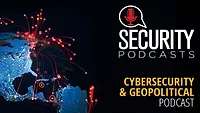Looking Back at Boston: Responding to Multiple Threats with Mobile Command Solutions
One year after the events in Boston, it is important that our nation’s law enforcement and homeland security leaders take a hard look at the lessons learned from that day and make some needed changes. While law enforcement officers at every level of government showed both courage and professionalism that day in Boston, the reality remains that fielding an agile, comprehensive response to complex, large-scale events remains a challenge. The most important near-term improvement that federal agencies can achieve is to make a next generation cross-platform mobile command unit a reality. While these units exist in some form at every level of law enforcement, the time is now to fit them with the latest technologies and make them ready for deployment.
While there can be important legal differences that arise from operating within the U.S., domestic federal agencies should strongly consider some valuable lessons learned from our military overseas when it comes to rapidly establishing joint operations centers (JOCs) and processing active crime scenes. While the structure can take many forms, one of the most important aspects of an effective JOC is the mere fact that all the key players and stakeholders are physically in the same space. While it may seem fundamental, one of the most important improvements to our military intelligence efforts in theatre was enabling a wider spectrum of players to operate within the same physical space. Having a rapidly deployable, standardized space, where representatives from all agencies involved can jointly train and “plug and play” with the latest technologies, is a vitally important step we must take.
While providing physical linkage to all the actors on the ground is important, ensuring that they can all communicate securely via one common and synchronized platform is vital to mission success. As past events, including Boston, have shown us, one of the first things lost in a critical event is the cellular network. While law enforcement and federal agencies will bring their own tactical networks with them, in most cases they are limited in scope and not interoperable with those of other agencies and responders. While FirstNet, a first responder network authority, is designed to provide this capability, the reality is that, at best, we are several years away from operational deployment of FirstNet and even if it is deployed it will not provide coverage everywhere.
Right now, there are commercially proven tactical mobile cellular networks that are made in the U.S.A. that can be rapidly initiated to create an interoperable, trusted communications net that enable local, state and federal law enforcement to communicate across agencies. Additionally, these networks can be expanded to include managed access capabilities allowing authorities to deny the use of cellular communications by suspects (including the use of cellphones to initiate detonation of secondary IEDs) while enabling them geo-locate survivors and persons of interest in real time.
Another element that should be part of the next generation response plan and Critical Event JOC is the creation and maintenance of a high-end canine cadre that can be quickly brought to high-profile public events. In many cases in the past, including Boston, federal authorities have leveraged local law enforcement canines to search for explosives and other threats. However, these dogs are often not well suited for such missions, given that their training and abilities are geared toward everyday law enforcement duties.
Currently, our military is giving away experienced, highly-trained explosive detection canines that can work several hundred yards off-leash to anyone who will take them. By maintaining a rapidly deployable cadre of these types of canines could enable responders to cover a much larger area at a far more rapid pace – a capability that would have made a big difference in Boston in the search for secondary IEDs. These animals can be imprinted on any substance, and are an ideal asset to use when a multiple event situation involving explosive and chemical/biological hazards is unfolding and must be more fully utilized.
Any multiple event response plan should also include the use of rapidly deployable Unmanned Aerial Vehicles (UAVs) of all types to enable real time intelligence and search and rescue capabilities. The data gathered by these aerial assets, combined with enhanced canine and communications capabilities; can provide 360-degree rapid response to multiple events by instantly relaying actionable data to the JOC and to all responders on the ground via the secure mobile cellular network.
The ability to rapidly set up joint operations centers and bring coordinated ground, air and communications capabilities to bear quickly has been a key difference-maker in combating terrorism overseas. Federal authorities can take a quantum leap in improving our critical event response capabilities here at home if they make use of lessons learned overseas in building a next-generation joint operations center that is customized for domestic use in one agile, standardized package.
Looking for a reprint of this article?
From high-res PDFs to custom plaques, order your copy today!





